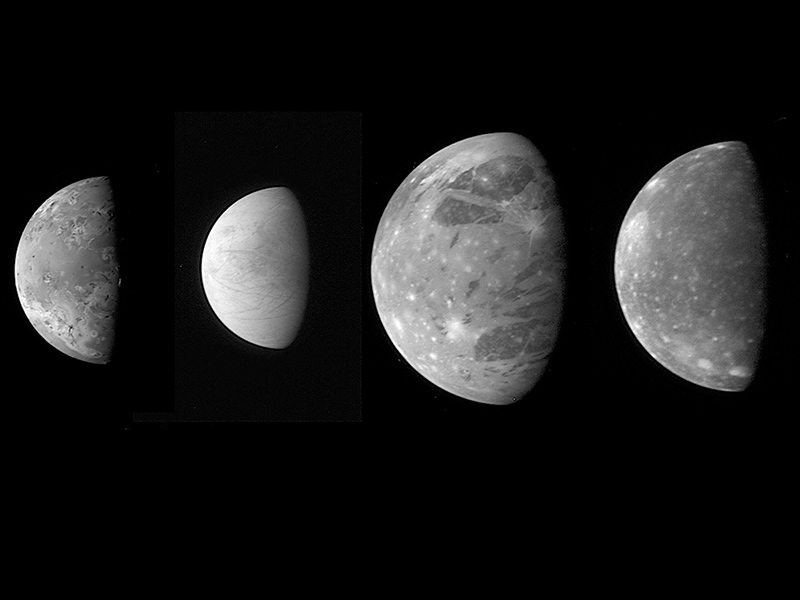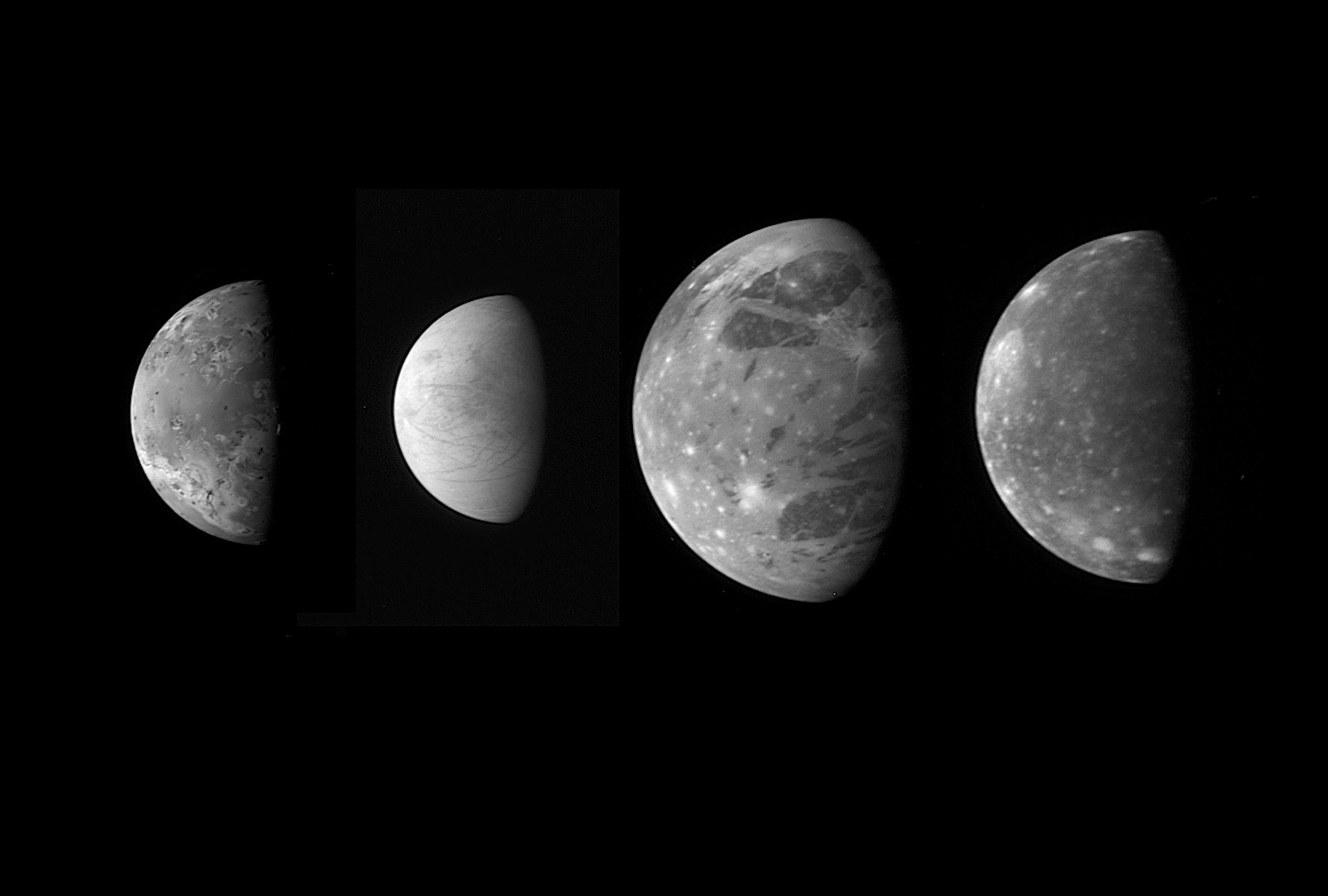Jupiter’s Moons: Family Portrait

| Credit | NASA/Johns Hopkins University Applied Physics Laboratory/Southwest Research Institute |
|---|---|
| PIA Number | PIA09352 |
| Language |
|
This montage shows the best views of Jupiter's four large and diverse "Galilean" satellites as seen by the Long Range Reconnaissance Imager (LORRI) on the New Horizons spacecraft during its flyby of Jupiter in late February 2007.
The four moons are, from left to right: Io, Europa, Ganymede, and Callisto. The images have been scaled to represent the true relative sizes of the four moons and are arranged in their order from Jupiter.
Io, 2,260 miles (3,640 kilometers) in diameter, was imaged at 03:50 Universal Time on Feb. 28, 2007, from a range of 1.7 million miles (2.7 million kilometers). Io is notable for its active volcanism, which New Horizons has studied extensively.
Europa, 1,938 miles (3,120 kilometers) in diameter, was imaged at 01:28 Universal Time on Feb. 28, 2007, from a range of 1.8 million miles (3 million kilometers). Europa's smooth, icy surface likely conceals an ocean of liquid water. New Horizons obtained data on Europa's surface composition and imaged subtle surface features, and analysis of these data may provide new information about the ocean and the icy shell that covers it.
New Horizons spied Ganymede, 3,268 miles (5,262 kilometers) in diameter, at 10:01 Universal Time on Feb. 27, 2007, from 3.5 million kilometers (2.2 million miles) away. Ganymede, the largest moon in the solar system, has a dirty ice surface cut by fractures and peppered by impact craters. New Horizons' infrared observations may provide insight into the composition of the moon's surface and interior.
Callisto, 2,995 miles (4,820 kilometers) in diameter, was imaged at 03:50 Universal Time on Feb. 28, 2007, from a range of 4.2 million kilometers (2.6 million miles).

